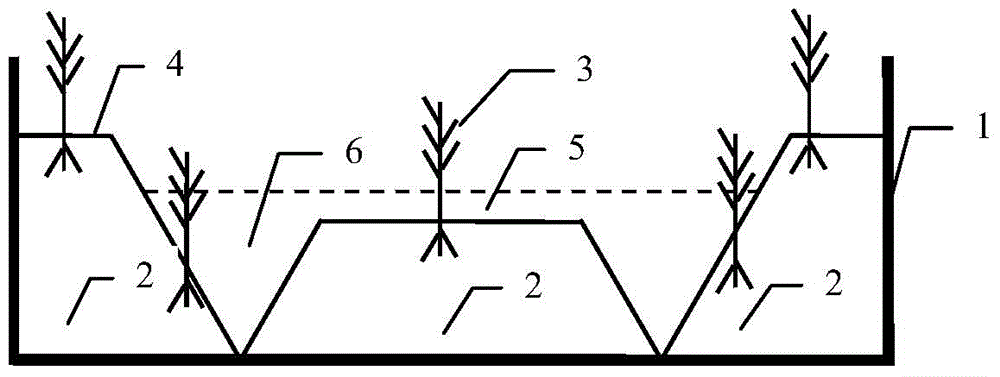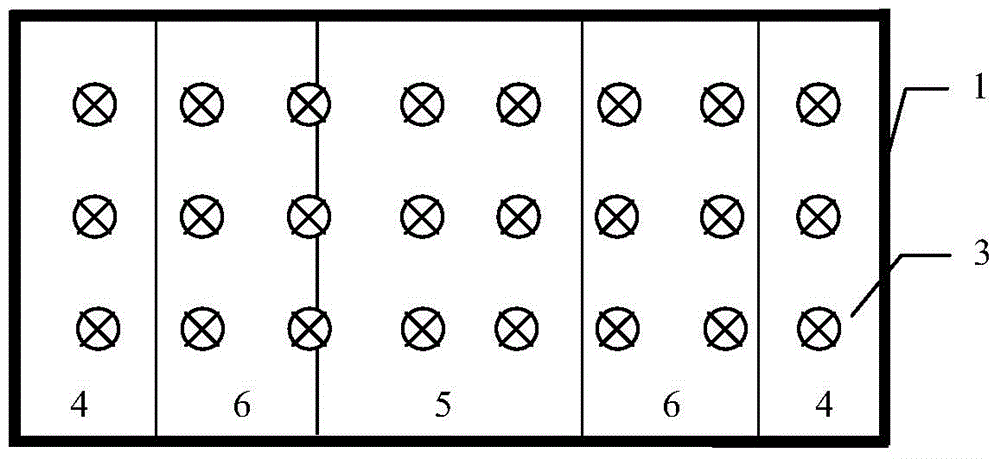W-shaped constructed wetland for amphibian protection in polluted sites
A technology of artificial wetlands and amphibians, applied in the fields of application, biological water/sewage treatment, water/sludge/sewage treatment, etc., can solve the problems of labor consumption, time-consuming and expensive establishment of nature reserves, and prevent harm , simple structure and low construction cost
- Summary
- Abstract
- Description
- Claims
- Application Information
AI Technical Summary
Problems solved by technology
Method used
Image
Examples
Embodiment 1
[0014] A non-ferrous metal smelting base adopts the above method, with an area of 200m 2 , the bottom and surrounding pool walls 1 are constructed of cement concrete, and the matrix is made of non-polluting soil 2, filled in a W-shaped with high and low points, and the W-shaped wetland is divided into three areas: land area 4, shallow water area 5 and deep water District 6. Wetland plants 3 are mainly planted with cattails, with a planting density of 80 plants / m 2 , the water source uses local groundwater at a depth of 200m. During the period of use, the water source is regularly replenished to ensure that the water depth in the shallow water area is between 2-10cm. The wetland plants are harvested twice a year, and the amphibians are protected from toads. Compared with the toad in the polluted area, the birth rate increased by 7%, the death rate decreased from 74% to 0, the deformity rate decreased from 3% to 0%, and the metamorphosis rate increased from 90% to 100%. T...
PUM
 Login to View More
Login to View More Abstract
Description
Claims
Application Information
 Login to View More
Login to View More - R&D
- Intellectual Property
- Life Sciences
- Materials
- Tech Scout
- Unparalleled Data Quality
- Higher Quality Content
- 60% Fewer Hallucinations
Browse by: Latest US Patents, China's latest patents, Technical Efficacy Thesaurus, Application Domain, Technology Topic, Popular Technical Reports.
© 2025 PatSnap. All rights reserved.Legal|Privacy policy|Modern Slavery Act Transparency Statement|Sitemap|About US| Contact US: help@patsnap.com


